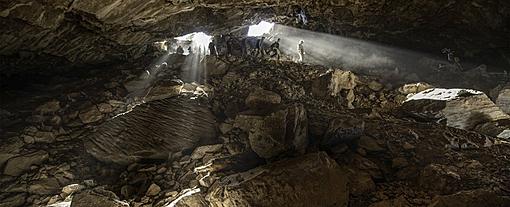The debris scattered across the ติดต่อ slotxo floor of remote ancient caves in Mexico has created a new source of ancient DNA.For the first time, scientists have sequenced ancient DNA from soil samples, and all thanks to the Upper Stone Age bears who used their caves as a toilet about 16,000 years ago.The scientists describe their work as "Genomics landings on the Moon", as this breakthrough, mean that fossils are no longer the only way to obtain ancient DNA. It also shows that ancient DNA can be studied in a population context rather than a fragmented individual.
When animals or humans urinate or defecate, living cells are also excreted, and DNA fragments from these cells are what we can detect in soil samples," said geneticist Eske Willerslev at the University of Copenhagen in Denmark. explain With an extremely powerful sequencing technique, we have created a new genome - a genetic profile - from these parts for the first time. Suitable, can exist for more than 10,000 years The Chiquihuite Cave where the specimen was collected is known as a site of historical significance. Numerous tools and stone fragments, dating from 25,000 to 30,000 years ago, show the times of human occupation.
But humans are not the only ones who make use of the caves.Bones and DNA traces also reveal the existence of many animals including bears, bats, voles, mice and kangaroos. Using those examples, Willerslev and his team sequenced and reconstituted the two Upper Stone Age bear genomes.he first specimen is an ancestor of the modern American black bear (Ursus americanus), which still roam the forests of North America. Second, the extinct giant short-faced bear (Arctodus simus), one of the largest ever living bears, died at the end of the last ice age about 11,000 years ago.
Sampling different cultural layers in the cave (Devlin A. Kandy).
The researchers then compared these genomes with other bears, including 83 current black bears from the United States and Canada, and three giant short-faced bears that lived in Yukon in Canada 22,000 years ago, based on analysis. Their fossils They found that the Chiquihuite black bear is closely related to the modern North American bear. But it also shares a common lineage with the Alaskan black bear.
The researchers also discovered that Chiquihuite bears belonged to Eastern ancestry and that this lineage was the first to differ from other current American black bear populations.The DNA of the giant short-faced bear was pieced together using the DNA of the eight modern bears of the Ursidae family, as well as three extinct bears and three giant shorthair bears in Yukon.




 LinkBack URL
LinkBack URL About LinkBacks
About LinkBacks

 Reply With Quote
Reply With Quote